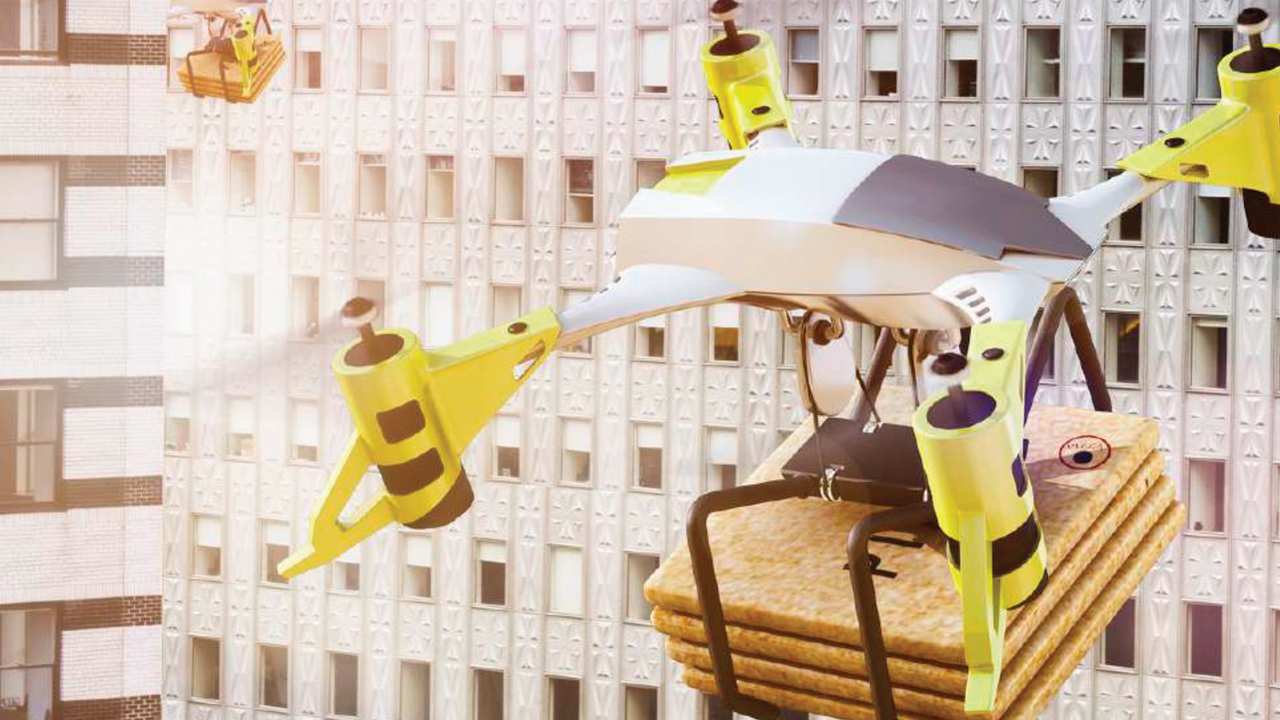
2022 technology trends through the lens of CES
Emerging tech-driven trends and what they mean for marketers this year
Necessity – credited as the ‘mother of invention' – drove consumers to test new platforms, technologies and processes to alleviate frictions the pandemic created, expedited or uncovered. Whether it was figuring out how to secure groceries while quarantining, taking on new roles like ‘teacher’ or finding new streams of income and entertainment, we all changed how we work, shop, interact and play.
While it will take years to determine which new behaviours are long-term versus. shorter-term, it’s evident that the last two years have changed how people evaluate and select digital media and brand-driven solutions. As a result, marketers have rethought how to drive growth and efficiency in unexpected times.
Additionally, consumers tested, embraced and abandoned technologies and platforms in the last two years which will have longer-term impacts. How platforms and brands court those consumers – influencers included – to drive engagement and adoption will need to evolve as well. The economic implications for both consumers and brands have turbo-charged the need to re-examine and reflect upon policies around data transparency and privacy, cookies, influencer investments, content creation and digital marketing.
So, how do you challenge the status quo when your brand, industry and world is constantly being disrupted?
The answer lies in restructuring and repositioning your teams, divisions, partnerships and company to operate within the omnipresent opportunities that endless disruption provides. Seeking the upside to today’s challenges uncovers insight for tomorrow’s successes. Therefore, what may seem like chaos could really be opportunity in disguise. It’s all about embracing how you operate day to day, to take advantage and position yourself to uncover insights that unlock strategic success.
Connectivity: embracing a meta world
The metaverse is the next iteration of immersive, three-dimensional digital/virtual experiences. By utilising emerging technologies, the metaverse creates innovative ways to engage, interact and transact with people, brands and worlds.
Why this matters to brands:
- The notion of community is evolving. We will likely end up with multiple metaverses based on different online communities, each with its own social and cultural values. Understanding how consumers tap into these digital spaces will help uncover how to engage in ways that both complement and differ from how consumers connect online.
- There's real money on the line. Just as you buy extra lives on a mobile game or invest in weapons to upgrade your experience in a first-person shooter, spending real money (even if it’s converted into cryptocurrency) on digital assets (i.e., digital accessories, NFTs) for your online life, makes sense. It gives brands plenty of opportunities to become a part of your real-world life by integrating into and providing utility to your digital life.
- ‘Activations’ as we know them are changing. Experiences when they are multiverse-dimensional need more planning and forethought than ever for maximum impact and crossover success.
- As consumers’ digital identities move beyond simply bitmoji and emoji, the signifiers that tell others who they are will inevitably translate via digital accessories and goods that adorn their digital worlds and personas. This means plenty of spending on virtual possessions – comparable to spending on physical ones today. It also will inevitably drive more time online and more blurring between how we see time spent in both the physical and digital world.
NFT and cryptocurrency: fun or the future?
Keeping pace with the marketplace and hot topics on developers’ (and marketers') minds, CES offered a new digital assets exhibit and conference. The exhibit was designed to explore how the non-fungible tokens (NFTs) – unique digital assets that live on the blockchain – marketplace is disrupting creator currencies like the art world and music industry.
Both software and hardware solutions showed their offerings for brands and businesses seeking to embrace tokenisation in their category, be it fashion, gaming or beyond.
Why this matters to brands:
- Crypto and blockchain can expedite operational efficiency. This can give your brand access to innovation and efficient ways of managing inventory, structuring digital/media contracts, evolving retail/shopper marketing programme or sampling contracts.
- Digital scarcity is necessary to create a unique user experience. It enables fans to form longer-lasting and more profound connections with brands, which can be tied to sampling and loyalty programmes.
- NFTs reintroduce scarcity and unique content via the creator economy. NFTs – and the underlying tech – introduce a level-playing field that will enable and empower content creators alongside brands, giving creator partnerships new depths.
- Think beyond the hype cycle. 2021 saw plenty of hype-driven NFT tests designed to grab headlines and tap into the latest buzzword. Understanding how NFTs can drive real value for brands will enable you to understand how they can be utilised to disrupt your own industry.
- NFT’s applications are not online only. While the content may be digital, NFTs can be used to augment real-world experiences (like on-site activations), as well as consumer loyalty programmes.
Smart home: home is where the heart (and investment) is
The last two years have kept us indoors more than ever, transforming homes into multihyphened spaces (e.g., school-office-restaurant-bar), driving increased demand for efficiency and comfort.
This means renewed interest in home-based solutions that drive efficiency when it comes to saving time, money and sanity. This year at CES we saw increased focus on connected health, independent living and emerging home services showcased, all touting interconnectability, seamless sharing and reliable data privacy.
Why this matters to brands:
- How consumers utilise private spaces is evolving; how brands provide utility within them should, too. With more time spent within the home and local neighbourhood, understanding how spaces are being transformed for multiple use cases can uncover insights as to how your brand can alleviate new frictions and be used in unexpected ways.
- Future smart(er) devices will enable you to add layers of wisdom. Thanks to their ever-evolving use cases and physical placement within the intimate setting of the home, brands will have more opportunities to leverage the power of the first-party data. These offer to alleviate frictions – both major and everyday – in results-driven, tangible ways.
- AI and ML will increase backend efficiency of devices to not only connect, but also enhance, modern living. Whether it's using AI to adapt a TV’s picture and sound to compliment the environment it’s in or teaching devices to respond differently depending on who is speaking to it, the data you collect and the way you apply the data back into your offerings, can make or break the levels of utility you offer.
Retail and experience: retailtainment renaissance

Engaging retail offerings no longer means a digitally-optimised ecommerce experience nor a hands-on in-store experience; it means every physical, digital, emotional, tactile touchpoint requires both experience and entertainment.
Why this matters to brands:
- Experiences continue to be social currency. Earned media and word of mouth – driven by consumers' brand interactions – help cut through the chatter and drive brand perception.
- Digital offers the chance for differentiation via branded experience. Today there are more opportunities to present and share your brand online. As the metaverse unfolds, it's critical to understand that those opportunities must drive curiosity and enable consumers to discover through visual, branded and interactive content.
- App-esque offerings streamline experiences – and sales. Not every brand needs an app, nor does every consumer want to download them. Finding ways for app-like experiences across platforms already utilised (SMS, mobile browser) can help drive loyalty through speed.
- Experience doesn’t end when the purchase is complete. ‘Last Mile’ tech, like delivery robots and drones, not only provide utility and efficiency but also conversation-driving content.
- Safety and seamlessness will continue to be the focus. Consumers are accustomed to, and expecting, safe experiences in-store and seamless online offerings, making contactless tools critical.
Future of work: fluctuating fluidity

How we work was one of the most upended facets of life over the last nearly two years.
Whether you’re in an office, at home or embracing hybrid working, it’s clear that nearly every industry will need to engage in serious ‘test and learns’ when it comes to the most efficient ways of working – both for output and employee retention. Flexibility will be required to meet both industry and employee demands.
Why this matters to brands:
- New routines require new habits. As consumers figure out what works for them and how to manage their professional lives – especially as they increasingly become intertwined with their personal lives – they will need to develop new habits. These must be malleable and flexible as work schedules and office demands change over time. How can brands provide support as their habits change?
- Be the brand to deliver human confidence. While some people thrive while working at home or in non-traditional work environments, others need more support to drive productivity. How can brands leverage storytelling (i.e., podcasts, video content) to help deliver the confidence and education they may feel is lacking outside traditional office walls?
- Events are an evolving opportunity. As professionals seek new ways to connect when more conferences and meetings are done virtually, there’s opportunity to deliver experiences both via meta-esque platforms as well as in real life.
Content creators: purists and tourists

In 2021 we saw brands, technologies and investors throw more money and resources at content creators than ever – even in the B2B space.
As decentralised opportunities, like the metaverse and NFTs, give content creators more ways to own and monetise their digital IP and content, we'll see more chances to drive value from creator partnerships for brands and creators.
Why this matters to brands:
- Authentic content marketing requires authentic content. According to GroupM's Audience Origin report, a shrinking majority of consumers (73%) said they would accept having to watch commercials to maintain a lower monthly bill for streaming video services (vs. 76% in last year’s survey). Investing the time and resources into finding the right creators and voices to align yourself with lends to natural collaboration and trust when it comes to letting other voices tell your brand's story.
- The consolidation of platforms will only enhance efficiencies. We will see a slew of acquisitions amongst the traditional and emerging platforms to offer competitive creator advantages. Understanding the platforms your consumers turn to can help prime your brand for opportunities as acquisitions integrate.
- Opportunities for creators to earn money will evolve. Whether it's launching an NFT marketplace for creators or streamlining ways to drive brand relationships, the evolving creator economy provides opportunities for creators, marketers and consumers to build strong relationships based on trust and utility.
- NFTs unlock value by making digital scarcity real and 'assetised.' NFTs also give creators control over their work, making them masters of distribution. Imagine supporting your favourite creator, getting your hands on their latest content directly from them, and getting an ‘NFT kick’ out of it. Your brand can support making this reality.
For more in-depth insight and analysis, download GroupM's CES 2022 Wrap Report
published on
13 January 2022
Category
More in Technology & data

How to build your brand in-game
A new research report from WPP and SuperAwesome

WPP puts itself at the heart of collaborative 3D worlds
Pixar's 3D animation file format – USD – is the invisible building block of our digital 3D future.

A clarion call for AI, accessibility & advertising
Innovating at the intersection of AI, accessibility, and advertising

